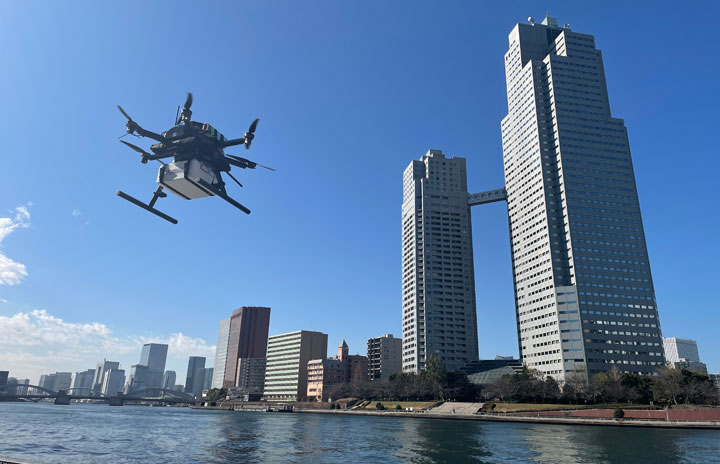Over the last two weeks, many commentators have warned that Russia’s invasion of Ukraine may portend dark things to come for Taiwan. Yet the key question the United States now faces has remained unanswered: what new actions should the U.S. undertake now to decrease the odds of conflict in the Taiwan Strait?
Given current preparations by China and the United States to develop the needed capability to seize or save Taiwan respectively, nothing short of a crash program — analogous to President Kennedy’s 1962 American-on-the-Moon challenge and quickly announced by President Biden — is likely to allow “the peaceful resolution of cross-Strait differences” as called for by the U.S.’s 1979 Taiwan Relations Act. While the current détente has held for many years, that may not remain the case for much longer. Last June, Chairman of the Joint Chiefs of Staff Gen. Mark Milley testified before Congress that President Xi Jinping had ordered the Chinese military to accelerate its timeline for attaining the operational capability to seize Taiwan by force from 2035 to 2027.
While it is widely understood that a clear and credible capability to thwart a prospective Chinese invasion is vital to keeping the peace in the Taiwan Strait, it is less widely understood that U.S. space vulnerability may play a crucial role in whether China is willing to gamble on invasion. Additionally, how the U.S. prepares for and responds to Chinese counterspace threats will be highly significant for both the prospects of Chinese success and the likelihood of uncontrollable escalation, plausibly even to the nuclear level.
Should the U.S. maintain its current course, certain critical space assets will almost certainly remain highly vulnerable to sudden interference or disablement by Chinese space-based antisatellite (ASAT) weapons for the foreseeable future. This is highly problematic. The combination of vulnerability and value incentivizes China to undertake or threaten such attacks. This, in turn, could induce Chinese overconfidence and make aggression more likely, spark miscalculation and unpredictable escalation by the United States, hamper U.S. military operations in and around the Strait, or simply cast a long shadow over bargaining both before and during a crisis. None of these outcomes are acceptable for the U.S. and its allies, and all can be readily avoided with appropriate preparations.
This is a realistic concern. The U.S. has yet to meaningfully begin the long process of managing this risk, and time is running out. Given the magnitude of the potential impact and its alignment with Chinese incentives, doctrine, and decision-making, even a small probability of this threat materializing would warrant urgent preparations to prevent the worst-case scenario—but the probability is likely not small. Shortly before his retirement last November, Gen. John Hyten, vice chairman of the Joint Chiefs of Staff and the United States’ second highest-ranking military officer, said that “although we’re making marginal progress, the DoD is still unbelievably bureaucratic and slow” in its response to China’s rapidly advancing offensive space capabilities. Of particular concern among these emerging next-generation ASAT weapons are Chinese dual-use spacecraft capable of ever-more-sophisticated hostile rendezvous-and-proximity operations (RPOs), referred to in April 2019 by Gen. Hyten as “kamikaze satellites that can ram into American [satellites].” This testimony accords with a wealth of direct evidence — explored in greater detail elsewhere — suggesting that if the U.S. remains on its current course, it will fail to adequately counter the threat Chinese ASATs pose to our most critical and vulnerable satellites. Indeed, at our current pace, we will still be vulnerable by 2035, much less by 2027.
Traditionally, critics have responded that China is unlikely to achieve this capability in the near future. Such assertions were always highly suspect but have recently become untenable. Chinese actions in late December showed the world that it is now only about two years behind the U.S. in RPO capability, down from five years behind only a few years ago. Specifically, China’s Shijian-21 (SJ-21) spacecraft approached the defunct Beidou-2 G2 navigation satellite at geosynchronous orbit (GEO) and performed RPOs to dock with the satellite. In so doing, China repeated a feat first accomplished by Northrop Grumman’s Mission Extension Vehicle-1 (MEV-1) less than two years prior, on Feb. 25, 2020.

Based on the old assumption of five years behind, the authors estimated that, by 2029, China could likely achieve the capability to attack on the order of 100 critical, vulnerable satellites in high orbits (including GEO) suddenly, simultaneously, and with little to no space debris. The ability to take out even a third that many could be highly consequential (e.g., destruction of almost the entire GPS constellation). By demonstrating a GEO docking capability three years ahead of the old schedule of five years, China will likely have such a capability by 2026, instead of 2029.
Read in the context of China’s explicit goal of becoming capable of seizing Taiwan by 2027, this new ASAT capability in disabling about 100 critical satellites at the opening of a war in space or on Earth is cause for serious concern. Since the early 1990s, China has pursued asymmetric capabilities with the explicit goal of deterring the U.S. from entering a conflict or significantly degrading U.S. and allied forces before they can ready a full-court press against a drive to take Taiwan. New ASAT capability could provide them with a key means of achieving this goal.
On March 3, Air Force Secretary Frank Kendall echoed many of Gens. Milley and Hyten’s concerns, noting that China’s ASAT advances threaten the security of U.S. and allied space systems. Fortunately, Secretary Kendall announced that this concern will be reflected in the Biden administration’s forthcoming national security and national defense strategies and drive budgetary priorities as the military services prepare to submit funding requests for 2024. This underscores the major steps DoD is taking to confront growing counterspace threats, especially those posed by China. Unfortunately, without more, this will not be sufficient. Because of the need to thwart Chinese aggression against Taiwan a mere five years from now, i.e., by 2027, waiting two more years to have full funding and begin moving at full speed would all but guarantee failure. Even beginning immediately, the U.S. will be cutting it close. Given the many steps involved, five years is not much time. Three years is simply untenable. Therefore, we have no time to waste.
Fortunately, it is not too late. While it would ordinarily require significantly more than five years to meet this challenge, the U.S. is full of talent — within government and without, throughout the DoD and numerous other agencies — and many of the essential elements, such as warning/self-defense zones and bodyguard spacecraft, have already been proposed and discussed. The key task will be to collaborate and cross-pollinate their ideas and proposals, and expedite action on the conclusions.
However, to do this at scale, in a serious way and on a sufficient timeline, will require a major departure from business as usual. Following the Sputnik shock of 1957, President Kennedy challenged the nation to do the impossible: send an American safely to the moon before the end of the decade to “catch up to and overtake” the Soviet Union in the “space race.” He succeeded. We now face a challenge both more pressing, with the stakes potentially catastrophic, and more easily achieved. Just as it was during the space race, it will be necessary to cut through the federal bureaucracy. To that end, President Biden should move swiftly to announce a 2027 China Project, challenging the United States to ready an adequate deterrence and defense capability against China’s threats by 2027. While this should cover a range of components, it is imperative that this effort specifically address the space element: as Gen. Hyten and others have made clear, the current course of action is far from adequate.
Should President Biden establish such a challenge and the DoD make it a priority to execute it, or if some alternative but similar mechanism is employed, the U.S. can still succeed, to the benefit of all Americans, the Taiwanese people, our allies and partners, and the liberal international order writ large — but time is short.
Brian Chow (Ph.D. physics, MBA with Distinction, Ph.D. finance) is an independent policy analyst with over 160 publications. He can be reached at brianchow.sp@gmail.com. Brandon Kelley is the Director of Debate at Georgetown University, and a graduate student in the Security Studies Program. He can be reached at bwk9@georgetown.edu.
Note: This article have been indexed to our site. We do not claim legitimacy, ownership or copyright of any of the content above. To see the article at original source Click Here













